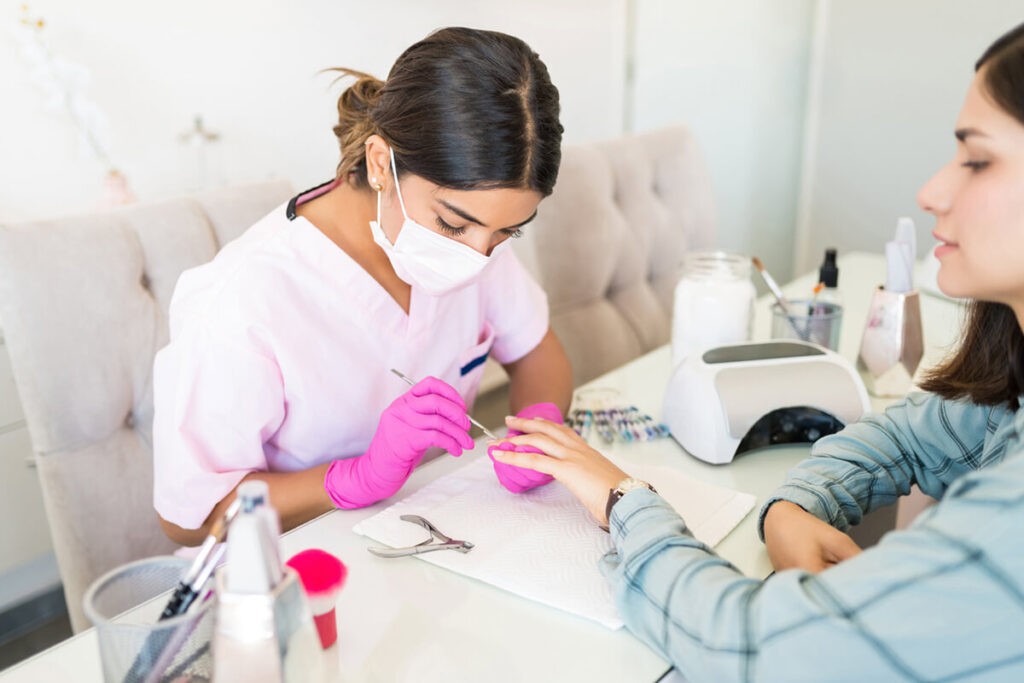Pedicurist and manicurist course:-
If you are interested in taking a pedicurist and manicurist course, there are several options available to you. You can find courses at local beauty schools or community colleges, online courses, or even apprenticeships with experienced nail technicians.
Some of the topics that you can expect to learn in a pedicurist and manicurist course include:
- Nail anatomy and physiology
- Proper nail care and maintenance techniques
- Understanding nail diseases and disorders
- Sanitation and sterilization techniques
- Nail art and design
- Business management and marketing
When choosing a course, it is important to consider the accreditation of the school or program, the cost, the length of the course, and the availability of hands-on training and experience. It’s also important to check the requirements for licensure in your state, as each state has its own regulations for nail technicians.
Overall, taking a pedicurist and manicurist course can be a great way to gain the skills and knowledge needed to start a career in the beauty industry or to enhance your existing skills as a nail technician.
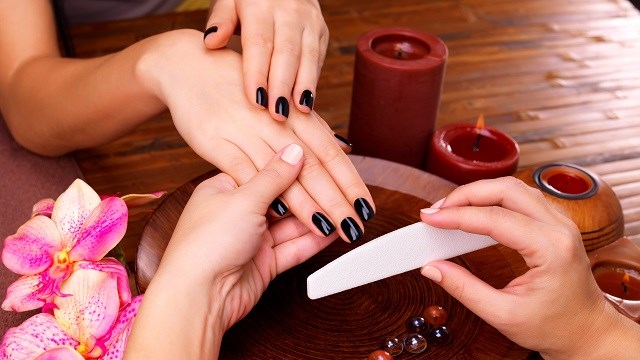

Brief Job Description: –
A job description is a document that outlines the responsibilities, requirements, qualifications, and other details of a particular job. It provides a clear understanding of what is expected of an employee in a particular role.
A brief job description typically includes the following elements:
- Job title: The title of the position being advertised or described.
- Job summary: A brief overview of the position and its main responsibilities.
- Key responsibilities: A list of the main duties and responsibilities of the job.
- Requirements: A list of the qualifications, skills, and experience required for the position.
- Working conditions: A description of the working environment, including the hours, location, and any physical demands of the job.
- Salary and benefits: A summary of the compensation package, including salary, benefits, and any other perks or incentives.
Overall, a brief job description is a valuable tool for both employers and job seekers, providing a clear and concise summary of the job and its requirements.
Personal Attributes:-
Personal attributes are the characteristics, traits, or qualities that a person possesses that contribute to their overall personality and behavior. These attributes can have a significant impact on how an individual interacts with others, their work performance, and their ability to succeed in various situations. Some common personal attributes include:
- Communication skills: The ability to communicate effectively with others, including active listening, clear articulation, and effective writing skills.
- Teamwork: The ability to work effectively with others, contribute to group efforts, and collaborate to achieve common goals.
- Adaptability: The ability to adapt to changing situations, be flexible, and adjust to new challenges and environments.
- Problem-solving: The ability to identify, analyze, and solve problems using logical and creative thinking.
- Leadership: The ability to motivate and inspire others, take charge of a situation, and make decisions that benefit the team or organization.
- Time management: The ability to manage time effectively, prioritize tasks, and meet deadlines.
- Accountability: The willingness to take responsibility for one’s actions and decisions, and to be accountable for meeting expectations.
- Self-motivation: The ability to stay focused and driven without external motivation, and to take initiative to achieve personal and professional goals.
Overall, personal attributes are an essential component of success in many areas of life, including education, career, and personal relationships.

Core Skills/ Generic Skills:- The user/ individual on the job needs to know and understand how to:
SA1. read policy and procedure documents, guidelines and memos in English to interpret the gist correctly
SA2. read common organizational signage in English accurately
SA3. read simple emails, instructions, advertisements, brochures, manufacturer’s labels, forms, formats and other common documents accurately
SA4. read and interpret correctly information about new products and services with reference to the organization and also from external forums such as websites and/or blogs
Preparing self and client Pedicurist & manicurist course:-
Preparing for a pedicurist and manicurist course involves both personal preparation and preparing your clients. Here are some tips to help you prepare:
Personal Preparation:
- Review the course material: Before starting the course, review the syllabus and course material to get a better understanding of what you will be learning. This will help you stay on track and be better prepared for each class.
- Practice basic techniques: Practice basic techniques such as nail filing, buffing, and polishing to get comfortable with the tools and products you will be using.
- Stay organized: Keep your materials and tools organized and easily accessible. This will help you save time and be more efficient during the course.
- Be open to learning: Be open to learning new techniques and methods, and don’t be afraid to ask questions if you don’t understand something.
Preparing your Clients:
- Educate your clients: Educate your clients on the benefits of proper nail care, including the importance of regular pedicures and manicures.
- Explain the process: Explain the process of a pedicure or manicure to your clients, including the tools and products that will be used, and what they can expect during the treatment.
- Discuss any health concerns: Discuss any health concerns or medical conditions with your clients before beginning the treatment. This will help you avoid any potential complications and ensure that the treatment is safe for your client.
- Follow proper sanitation practices: Follow proper sanitation practices to prevent the spread of infection or disease. This includes disinfecting tools and equipment between clients, and using disposable products where possible.
By following these tips, you can prepare yourself and your clients for a successful pedicurist and manicurist course, and build a solid foundation for a career in the beauty industry.
Carrying out manicure and pedicure services:-
Carrying out manicure and pedicure services involves several steps to ensure a professional and hygienic treatment. Here is a general overview of the steps involved:
- Consultation: Begin with a consultation with the client to discuss their nail care needs and preferences, and to identify any health concerns or medical conditions that may impact the treatment.
- Preparation: Prepare the client’s nails by removing any old nail polish or debris, and trimming and filing the nails to the desired length and shape.
- Soak: Soak the client’s feet or hands in warm water with added Epsom salt or essential oils for a few minutes to soften the skin and relax the muscles.
- Cuticle care: Apply cuticle remover to the nail plate, and use a cuticle pusher to gently push back the cuticles. Trim any excess cuticle or hangnails with a cuticle nipper.
- Exfoliation: Apply a scrub or exfoliating cream to the client’s feet or hands, and use a pumice stone or foot file to remove any dead skin cells and calluses.
- Massage: Apply lotion or oil to the client’s feet or hands, and use massage techniques to promote relaxation and improve circulation.
- Polish: Apply a base coat, two coats of nail polish, and a top coat to the client’s nails, allowing time to dry between coats. Alternatively, add nail art or other design elements as desired.
- Clean up: Clean up any excess polish or debris from around the nails, and sanitize all tools and equipment used during the treatment.
Throughout the treatment, it is important to maintain a high level of cleanliness and hygiene to prevent the spread of infection or disease. Use disposable products where possible, and disinfect all tools and equipment between clients.
Overall, carrying out manicure and pedicure services requires a combination of technical skill, artistic flair, and attention to detail to create a relaxing and enjoyable experience for the client.
Provide specialized hand and foot spa services Pedicurist & manicurist course:-
Specialized hand and foot spa services can enhance the overall pedicure and manicure experience for clients, providing added relaxation and therapeutic benefits. Here are some specialized hand and foot spa services that pedicurist and manicurist courses may cover:
- Paraffin wax treatment: A paraffin wax treatment involves dipping the client’s hands or feet in warm paraffin wax, which can help to soothe and moisturize dry, cracked skin.
- Hot stone massage: Hot stone massage involves using heated stones to massage the client’s hands or feet, which can help to relieve tension and promote relaxation.
- Aromatherapy: Aromatherapy involves using essential oils to enhance the pedicure or manicure experience, with scents such as lavender, peppermint, or eucalyptus used to promote relaxation or invigoration.
- Reflexology: Reflexology involves applying pressure to specific points on the hands and feet that correspond to different parts of the body, with the goal of promoting overall health and wellbeing.
- Moisturizing mask: A moisturizing mask can be applied to the hands or feet to help hydrate and nourish the skin, leaving it feeling soft and supple.
- Detoxifying soak: A detoxifying soak can help to remove toxins from the body, with ingredients such as sea salt, clay, or activated charcoal used to help draw out impurities.
- Hand or foot scrub: A hand or foot scrub can help to exfoliate the skin, removing dead skin cells and leaving the skin feeling smooth and soft.
By offering specialized hand and foot spa services, pedicurists and manicurists can create a customized experience for each client, helping to promote relaxation, rejuvenation, and overall wellbeing. These services can be a valuable addition to any pedicurist and manicurist course, helping students to build a diverse set of skills and techniques that can set them apart in the beauty industry.

Perform Indian head massage:-
Indian head massage is a therapeutic massage technique that originated in India and focuses on the scalp, face, neck, and shoulders. It involves using a combination of massage, acupressure, and other techniques to help relieve tension and promote relaxation.
Here are some steps to perform an Indian head massage:
- Have the client sit comfortably in a chair, with their back straight and their feet firmly on the ground. Cover their shoulders with a towel or shawl for comfort.
- Begin by massaging the scalp, using your fingertips to gently rub in circular motions. Move from the hairline towards the back of the head, applying firm but gentle pressure.
- Use your thumbs to apply pressure to specific points on the scalp, such as the temples, to help release tension and promote relaxation.
- Move on to the face, using your fingertips to gently massage the cheeks, forehead, and jawline. Use gentle circular motions and apply light pressure.
- Move on to the neck and shoulders, using your fingertips to massage the muscles and release any tension. Apply gentle pressure and use circular motions.
- Finish the massage by placing your hands on the client’s shoulders and gently squeezing, then releasing. Repeat this several times to help promote relaxation.
Throughout the massage, be sure to check in with the client and adjust your technique as needed to ensure their comfort. Indian head massage can be a valuable addition to a pedicurist and manicurist course, helping students to build a diverse set of skills and techniques that can set them apart in the beauty industry.
Carry-out post procedure activities:-
After completing a pedicure or manicure service, there are several post-procedure activities that a pedicurist or manicurist should carry out to ensure that the client is comfortable and satisfied with the service. Here are some common post-procedure activities:
- Clean and sanitize your tools: After completing a service, it is important to clean and sanitize your tools thoroughly to prevent the spread of bacteria or infection.
- Apply moisturizer: Apply a moisturizing lotion or cream to the client’s hands or feet to help keep the skin soft and hydrated.
- Offer aftercare advice: Provide the client with aftercare advice, such as avoiding wearing tight shoes or socks after a pedicure, or avoiding harsh chemicals after a manicure.
- Offer touch-ups: If the client notices any smudges or imperfections after the service, offer to touch them up to ensure their satisfaction.
- Provide payment and scheduling information: Collect payment for the service and provide information about scheduling future appointments.
- Clean and sanitize your workstation: Clean and sanitize your workstation, including any tools, surfaces, and equipment used during the service, to ensure that it is ready for the next client.
By carrying out these post-procedure activities, a pedicurist or manicurist can ensure that their clients are satisfied with the service and that they maintain a clean and hygienic workspace. These activities can be a valuable part of a pedicurist and manicurist course, helping students to build the skills and techniques necessary for a successful career in the beauty industry.
Prepare for mehendi application:- To be competent, the user/individual on the job must be able to:
After completing a pedicure or manicure service, there are several post-procedure activities that a pedicurist or manicurist should carry out to ensure that the client is comfortable and satisfied with the service. Here are some common post-procedure activities:
- Clean and sanitize your tools: After completing a service, it is important to clean and sanitize your tools thoroughly to prevent the spread of bacteria or infection.
- Apply moisturizer: Apply a moisturizing lotion or cream to the client’s hands or feet to help keep the skin soft and hydrated.
- Offer aftercare advice: Provide the client with aftercare advice, such as avoiding wearing tight shoes or socks after a pedicure, or avoiding harsh chemicals after a manicure.
- Offer touch-ups: If the client notices any smudges or imperfections after the service, offer to touch them up to ensure their satisfaction.
- Provide payment and scheduling information: Collect payment for the service and provide information about scheduling future appointments.
- Clean and sanitize your workstation: Clean and sanitize your workstation, including any tools, surfaces, and equipment used during the service, to ensure that it is ready for the next client.
By carrying out these post-procedure activities, a pedicurist or manicurist can ensure that their clients are satisfied with the service and that they maintain a clean and hygienic workspace. These activities can be a valuable part of a pedicurist and manicurist course, helping students to build the skills and techniques necessary for a successful career in the beauty industry.
Apply simple mehendi design Pedicurist & manicurist course:-
Mehendi or henna design is a traditional form of body art that involves creating intricate designs on the skin using a paste made from henna powder. Here are some steps to apply a simple mehendi design:
- Start by preparing the henna paste according to the instructions on the package. It is important to use fresh henna paste for best results.
- Clean the skin where the mehendi design will be applied with soap and water. Dry it thoroughly.
- Apply a thin layer of eucalyptus oil or any other oil to the skin to help the henna paste stick to the skin and prevent it from cracking.
- Using a small plastic cone or applicator bottle, apply the henna paste to the skin in the desired pattern. You can start with a simple design such as a flower, leaf, or spiral.
- Allow the henna paste to dry for at least 2-3 hours or until it starts to crack. You can leave it on overnight for a darker and longer-lasting color.
- Once the henna paste is completely dry, gently scrape it off using a tissue or a plastic spoon. Do not use water to remove the paste.
- Avoid washing the area with water for at least 12 hours to allow the mehendi to fully develop its color. You can use lemon juice or sugar water to help set the color.
By following these steps, you can apply a simple mehendi design to the skin. As a pedicurist and manicurist, knowing how to apply mehendi designs can be a valuable skill to offer to clients who may want to add a traditional touch to their nail art. A pedicurist and manicurist course may cover the basics of mehendi application and provide hands-on practice to help students develop this skill.
Appearance and behavior:-
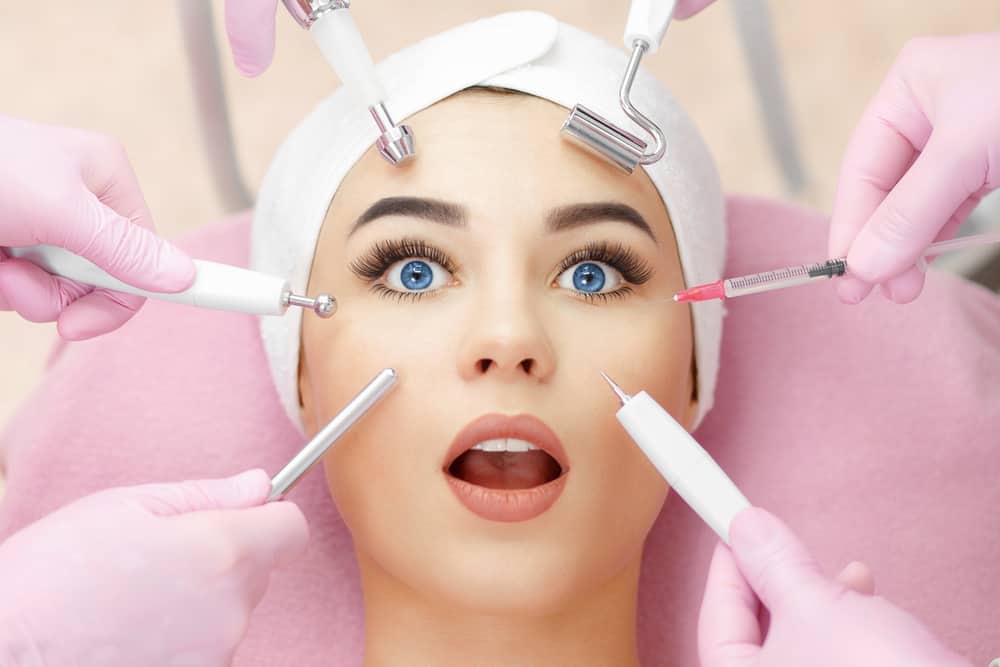
As a pedicurist and manicurist, it is important to maintain a professional appearance and behavior to create a positive impression on clients and build trust and confidence in your services. Here are some tips on how to present yourself professionally:
Appearance:
- Wear a clean and professional uniform or attire. Choose comfortable clothing that allows you to move easily and perform your duties efficiently.
- Keep your hair tied back and away from your face to maintain hygiene and avoid any interference with your work.
- Keep your nails clean and well-groomed. Clients will often look at your nails as an indicator of your expertise and professionalism.
- Avoid wearing strong perfumes or scents that may be overwhelming for clients with allergies or sensitivities.
Behavior:
- Greet your clients with a warm and friendly demeanor. Make eye contact and introduce yourself.
- Listen actively to your clients’ needs and preferences. Communicate clearly and professionally to understand their expectations and offer suggestions and recommendations.
- Respect your clients’ privacy and maintain confidentiality about their personal information.
- Maintain a calm and relaxed environment during the service. Avoid being distracted by your phone or other devices.
- Thank your clients for their business and offer aftercare advice and recommendations to ensure their satisfaction with the service.
By presenting yourself in a professional and courteous manner, you can create a positive experience for clients and establish yourself as a trusted and skilled pedicurist and manicurist. These behaviors and appearance can be taught and practiced as part of a pedicurist and manicurist course, helping students to develop the interpersonal and communication skills needed to succeed in the beauty industry.
Task execution as per organization’s standards:-
Executing tasks to the organization’s standards is crucial for providing high-quality services as a pedicurist and manicurist. Here are some steps to follow to ensure task execution meets the organization’s standards:
- Understand the organization’s policies and procedures: Familiarize yourself with the organization’s guidelines and procedures for delivering services. This includes the use of equipment, products, and techniques.
- Follow safety and hygiene protocols: Maintain proper hygiene and sanitation standards to prevent the spread of infections and diseases. Ensure that all tools and equipment are sterilized and disinfected after each use.
- Maintain accurate records: Keep accurate records of client information, services rendered, and products used. This helps to provide personalized services and track client preferences and needs.
- Manage time effectively: Plan and organize your time to ensure that you can complete all tasks efficiently and meet the clients’ needs.
- Communicate with clients: Communicate effectively with clients to understand their needs and preferences. Ask for feedback to ensure that you are meeting their expectations.
- Maintain a professional demeanor: Present yourself professionally and maintain a positive attitude. This includes dressing appropriately, using professional language, and being courteous and respectful to clients.
- Keep up-to-date with industry trends and developments: Stay informed about the latest trends, techniques, and products in the industry. Attend workshops, training sessions, and conferences to enhance your skills and knowledge.
By following these steps, you can ensure that you are executing tasks to the organization’s standards as a pedicurist and manicurist. As part of a pedicurist and manicurist course, students can learn the organization’s policies and procedures and practice their skills to meet the organization’s standards.
Communication and Information record Pedicurist & manicurist course:-
Communication and information recording are essential skills for pedicurists and manicurists. Effective communication ensures that clients’ needs are met, while accurate information recording helps to maintain client records and provide personalized services. Here are some ways to improve communication and information recording as part of a pedicurist and manicurist course:
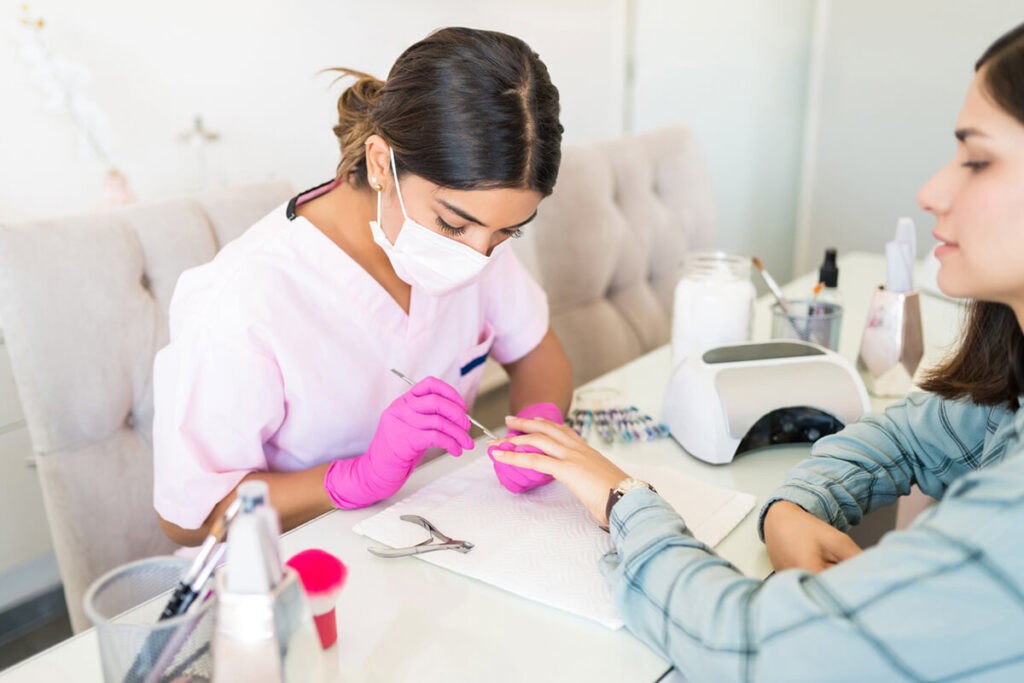
- Active Listening: Active listening is the foundation of effective communication. Trainees should learn to listen attentively to clients’ needs and concerns. It helps to build a rapport with the client and better understand their expectations.
- Verbal and Non-Verbal Communication: Pedicurist and manicurists must develop verbal and non-verbal communication skills. Trainees should learn to use appropriate language, tone of voice, and body language to convey their message effectively. They should also be able to read the client’s body language to understand their comfort level and tailor their service accordingly.
- Written Communication: Written communication skills are also essential for recording accurate client information. Trainees should learn to use the appropriate format, spelling, and grammar to maintain client records. They should also learn how to maintain confidentiality when recording client information.
- Technology: Trainees should be introduced to the various technologies used in pedicure and manicure services, such as online booking systems and record-keeping software. They should learn how to use them efficiently to maintain client records, schedule appointments, and send reminders.
- Follow-up Communication: After a service is completed, it is essential to follow up with clients to maintain a positive relationship. Trainees should learn how to follow up with clients through calls, text messages, or emails to collect feedback, offer after-care advice, and schedule future appointments.
By focusing on communication and information recording skills, pedicurist and manicurist trainees can provide better services to clients and build long-lasting relationships with them. These skills can be honed
Writing Skills:-
Good writing skills are important for a pedicurist and manicurist as it is necessary to maintain accurate records and communicate effectively with clients. Here are some tips on how to develop writing skills:
- Practice regularly: Writing is a skill that requires practice to improve. Set aside time to write regularly, whether it is taking notes during a pedicure or manicure session or writing emails to clients.
- Keep it simple: Use simple language and avoid using jargon or technical terms that clients may not understand. Write in a way that is clear and easy to read.
- Use proper grammar and punctuation: Proper grammar and punctuation are important to convey your message accurately. Take the time to proofread your writing and use tools such as spell check to avoid errors.
- Be organized: Organize your writing in a logical and coherent manner. Use headings and subheadings to break up the text and make it easier to read.
- Be concise: Get to the point and avoid rambling or going off-topic. Keep your writing concise and focused on the main message.
- Practice active listening: Good writing often begins with active listening. Listen carefully to what clients are saying and take notes to ensure that you capture important details accurately.
By developing good writing skills, a pedicurist and manicurist can effectively communicate with clients and maintain accurate information records. These skills can be taught and practiced as part of a pedicurist and manicurist course, helping students to improve their communication skills and deliver high-quality services.
Guidelines for Assessment:-
Assessment is an important part of a pedicurist and manicurist course as it helps to measure the students’ understanding of the course content and their ability to apply their skills in real-world scenarios. Here are some guidelines for conducting assessments:
- Use a variety of assessment methods: Use different assessment methods such as written tests, practical demonstrations, and case studies to ensure that students are being evaluated on different aspects of the course.
- Clearly define assessment criteria: Provide clear and specific assessment criteria so that students understand what is expected of them. This also helps to ensure consistency in grading and provides a transparent assessment process.
- Provide constructive feedback: Provide constructive feedback that is specific, timely, and actionable. This helps students to understand their strengths and weaknesses and provides guidance on how they can improve.
- Ensure fairness and objectivity: Ensure that assessments are fair and objective by following standard assessment procedures and avoiding bias. This helps to maintain the integrity of the assessment process.
- Consider different learning styles: Consider different learning styles when designing assessments. Some students may learn better through practical demonstrations while others may prefer written tests. Providing a variety of assessment methods can help to ensure that all students have the opportunity to demonstrate their understanding and skills.
- Align assessments with learning outcomes: Ensure that assessments align with the learning outcomes of the course. This helps to ensure that students are being assessed on the skills and knowledge that are important for the course.
By following these guidelines, instructors can conduct assessments that are fair, objective, and effective in measuring the students’ understanding and skills.

Providemanicure and pedicure services:-
Manicure and pedicure services are beauty treatments that involve cleaning, shaping, and polishing of the nails on the hands and feet. The process typically involves soaking the hands or feet in warm water to soften the nails and cuticles, then trimming and shaping the nails and cuticles using various tools such as nail clippers and cuticle nippers.
After the nails and cuticles have been groomed, the nails are often polished with nail polish or buffed to a shine. Many salons and spas also offer additional treatments such as hand and foot massages, paraffin wax treatments, or nail art.
It is important to choose a reputable salon or spa for your manicure and pedicure services, as poorly sterilized tools or unsanitary conditions can lead to infections or other health issues. Additionally, it is important to communicate any allergies or sensitivities you may have to the salon staff to ensure that the products used in your treatment do not cause any adverse reactions.
Provide specialized hand and foot spa services Pedicurist & manicurist course :-
As an AI language model, I can provide you with information on specialized hand and foot spa services and courses for becoming a pedicurist and manicurist.
Specialized hand and foot spa services typically include a range of treatments such as exfoliation, moisturizing, and massage of the hands and feet using specialized products and techniques. These treatments may also involve the use of hot towels, paraffin wax, or other spa equipment.
To become a pedicurist and manicurist, you can consider enrolling in a professional course. Many beauty schools and vocational colleges offer programs that focus on nail care and esthetics, which can include specialized training in manicures, pedicures, and hand and foot spa services.
These courses typically cover a range of topics such as nail anatomy, sanitation and hygiene, product knowledge, nail shaping and polishing, and massage techniques. Some courses may also include business management and customer service training, which can be useful for those who plan to operate their own salon or spa.
Upon completion of a pedicurist and manicurist course, you may be eligible to obtain a license or certification, depending on your location. This can allow you to legally offer nail care services to clients and can also demonstrate your expertise and professionalism to potential employers or clients.
It is important to choose a reputable training program and ensure that it meets the licensing or certification requirements in your area. Additionally, continuing education and professional development can help you stay up-to-date with the latest trends and techniques in the nail care industry.
Shampoo and condition hair and scalp:-

As an AI language model, I can provide you with information on how to shampoo and condition your hair and scalp.
Shampooing and conditioning your hair and scalp is an important part of maintaining healthy and clean hair. Here are some general steps you can follow:
- Wet your hair thoroughly with warm water. Be sure to get your hair and scalp completely saturated.
- Apply a small amount of shampoo to your scalp and massage it gently with your fingertips. Focus on the roots of your hair, where most of the oil and dirt tends to accumulate.
- Work the shampoo through the length of your hair, but be gentle to avoid tangling or damaging your hair.
- Rinse your hair thoroughly with warm water until all of the shampoo is removed.
- Apply a small amount of conditioner to the length of your hair, focusing on the ends. Avoid applying conditioner to your scalp, as it can make your hair look greasy.
- Leave the conditioner in your hair for a few minutes, or as directed on the label.
- Rinse your hair thoroughly with cool water. Cool water can help seal the cuticle of your hair, which can make it appear smoother and shinier.
- Gently towel-dry your hair, avoiding rubbing or pulling on your hair, which can cause damage.
Some additional tips to keep in mind:
- Use a shampoo and conditioner that is appropriate for your hair type. For example, if you have dry or damaged hair, look for a moisturizing shampoo and
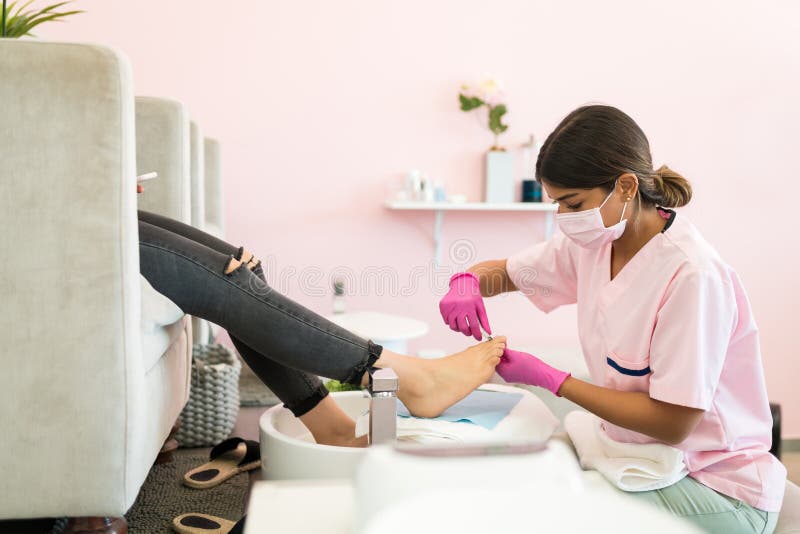
Create a positive impression at the workplace:–
Creating a positive impression at the workplace can have a significant impact on your career growth and the success of your team. Here are some tips to help you achieve that:
- Be punctual: Arrive on time to work and meetings to demonstrate your professionalism and respect for others’ time.
- Dress appropriately: Dress professionally and follow the dress code of your workplace. Your appearance can influence how others perceive you.
- Be polite and respectful: Show respect to your colleagues, superiors, and clients by using polite language and gestures.
- Be proactive: Take initiative and go above and beyond your job responsibilities. This shows that you are willing to take on challenges and contribute to the success of the organization.
- Maintain a positive attitude: Stay optimistic and positive even during challenging times. This can help create a positive work environment and inspire others to do the same.
- Communicate effectively: Listen actively, speak clearly and concisely, and avoid gossiping or spreading negativity.
- Be a team player: Collaborate with your colleagues and help others when needed. This fosters a sense of teamwork and can create a positive work culture.
- Develop your skills: Take opportunities to learn new skills and stay up-to-date with industry trends. This can help you contribute more to your organization and show your commitment to personal growth.
Remember that creating a positive impression takes time and effort, but it can pay off in the long run by enhancing your career prospects and fostering strong relationships with colleagues and clients.
application of simple mehendi/henna designs:-
Mehendi or henna is a form of body art that involves applying intricate designs using a paste made from the henna plant. Here are some ideas for applying simple mehendi designs:
- Floral Designs: Draw small flowers, leaves, and vines to create a simple and elegant design.
- Geometric Designs: Use lines, circles, and triangles to create geometric shapes that can be combined to create a unique design.
- Arabic Designs: Arabic mehendi designs are known for their bold and intricate patterns. Try drawing a simple Arabic design using small dots and lines.
- Paisley Designs: Paisley designs are popular and can be drawn easily. Draw a teardrop shape and add lines and dots to create a simple yet beautiful design.
- Heart Designs: Draw a simple heart shape and add small dots and lines to create a charming mehendi design.
- Animal Designs: Draw a simple animal like a butterfly, peacock, or elephant and add small details to create a unique mehendi design.
- Modern Designs: If you want a contemporary look, try drawing simple mehendi designs with shapes like triangles, circles, and squares.
When applying mehendi, remember to clean and dry the skin first. You can apply a thin layer of lemon juice and sugar solution to the skin before applying the mehendi to make the design darker. Leave the mehendi on for several hours or overnight before scraping it off to reveal the design.
Prepare and maintain work area:-
Preparing and maintaining a work area is essential to ensure a safe, productive, and organized workplace. Here are some tips to help you prepare and maintain your work area:
- Clear the clutter: Remove any unnecessary items from your workspace to create a clean and organized environment.
- Keep it clean: Regularly clean your work area to maintain a hygienic and safe environment. Use appropriate cleaning agents to sanitize surfaces.
- Proper lighting: Ensure that there is sufficient lighting in your work area to prevent eye strain and promote productivity.
- Organize your tools: Arrange your tools and equipment in a logical order that makes them easily accessible.
- Proper storage: Use storage solutions such as shelves, cabinets, and drawers to keep your work area organized and clutter-free.
- Keep it safe: Ensure that your work area is free of any hazards such as loose wires or objects that could cause tripping or falling.
- Personal protective equipment (PPE): Use PPE such as gloves, safety glasses, and masks to protect yourself from any potential hazards.
- Regular maintenance: Regularly inspect your equipment and tools for any damage or malfunctioning parts. If you notice any issues, report them to your supervisor immediately.
By following these tips, you can create a safe, productive, and organized work area that can help improve your efficiency and effectiveness on the job.
Maintain the health and safety at the workplace:-
Maintaining health and safety at the workplace is critical to prevent injuries, illnesses, and accidents that could negatively impact employees’ well-being and productivity. Here are some tips for maintaining health and safety at the workplace:
- Identify and assess risks: Conduct a risk assessment to identify potential hazards in the workplace, such as slippery floors, hazardous chemicals, or heavy machinery.
- Develop and implement safety policies: Develop and implement safety policies and procedures that outline the steps employees must take to ensure their safety while on the job.
- Train employees: Provide training to employees on how to recognize and avoid potential hazards in the workplace, and ensure they understand the safety policies and procedures.
- Provide appropriate equipment: Provide appropriate personal protective equipment (PPE) such as hard hats, safety glasses, gloves, and respirators to protect employees from hazards.
- Maintain equipment: Regularly maintain equipment and machinery to prevent malfunctions and potential hazards.
- Promote good hygiene: Encourage good hygiene practices, such as frequent hand washing, to prevent the spread of illnesses.
- Ensure proper ventilation: Ensure adequate ventilation in the workplace to prevent exposure to harmful chemicals and gases.
- Respond to incidents: Have an emergency plan in place and ensure that all employees know how to respond to incidents such as fires or medical emergencies.
- Regularly review and improve: Regularly review and improve the health and safety policies and procedures to ensure they remain relevant and effective.
By following these tips, you can create a safe and healthy workplace that promotes employee well-being and productivity.
Technical Knowledge:- The user/individual on the job needs to know and understand:
KB1. environmental conditions required and expected for carrying out services and importance of maintaining these Conditions: Air, light, space, temperature, sound, cleanliness, etc.
KB2. anatomical structure, function, characteristics of nail and the process of nail growth Structure: Nail root-matrix, mantle, plate, wall, grooves, bed, lunula, free edge, hyponychium, cuticle Functions – protection
kB3. anatomical structure and function of the skin Structure: The layers of the epidermis: the dermis, the subcutaneous layer; the hair follicle, the hair shaft, the sebaceous gland, arrector pili muscle, sweat gland, and sensory nerve endings Functions: Sensitivity, heat regulation, absorption, protection, excretion, secretion and vitamin D production
KB4. names and position of bones of lower leg and foot
KB5. names and position of bones of the wrist, hands fingers and forearm
KB6. structure and functions of the lymphatic vessels of the lower leg, foot,hand and arm
KB7. position of arteries and veins of lower leg, foot, hand and arm
KB8. location of muscles of the lower leg, foot, hand and arms
KB9. nail diseases and
KB10. nail and skin analysis by visual/manual examination to identify treatable conditions and contra indications restricting or preventing service
KB11. respective necessary action relevant to contra-indications
KB12. products and tools suitable to carry the procedure Products: Exfoliant, enamel remover, nail enamels, cuticle cream Tools: pedicure clipper, foot scrapper, nail brush, nail file, cuticle nippers, cuticle knife, emery boards, nail scissors, nail clippers
KB13. pedicure and manicure techniques Techniques: Filing, buffing, application of cuticle cream, removal of cuticle, cuticle pushing, polishing
KB14. contra-actions and respective necessary actions
KB15. customer service principles including privacy and protection to modesty of the customers importance of keeping accurate records of services, clients and product usage
O
